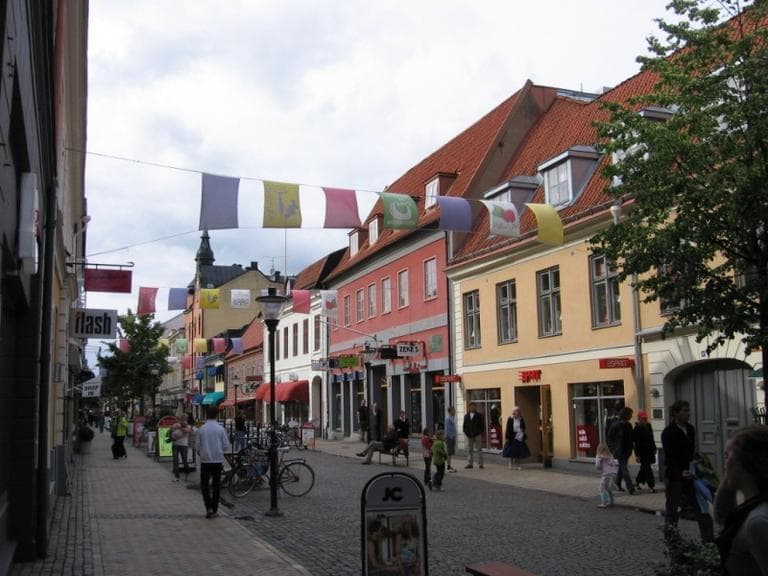Advertisement
Climate Change Series: Energy Efficiency
Introduction
Energy efficiency used to mean keeping the thermostat below 68 degrees or putting on a sweater.
No longer.
A generation of study and technological advances have transformed the field — making huge economic and environmental savings possible.
In his State of the Union address on Tuesday, President Obama challenged the nation “to cut in half the energy wasted by our homes and businesses over the next 20 years.”
Is it even possible? And could the widespread use of energy efficient technologies stem the rising tide of climate change?
Energy and environmental experts Dick Henry and Douglas Foy offer their insights.

A former consultant to Public Service of New Hampshire, and former president of the New Hampshire Audubon Society, D. Dickinson "Dick" Henry, Jr. is executive director of the Jordan Institute. The mission of the Jordan Institute is to help communities enhance the health of people and the environment in ways that make economic sense.
More than two-thirds of electric energy in the U.S. is wasted before it ever lights a bulb, or powers an appliance. And 50 to 80 percent of energy used to heat and cool buildings — homes, offices, factories, warehouses and store — is wasted, warming the surrounding atmosphere.
We don't have a global energy supply problem. We have a massive energy waste problem.
At the Jordan Institute, where I work, we focus on energy conservation in buildings. Why? About 48 percent of the country’s energy — electric and thermal — is expended in buildings. Consider that percentage against the roughly 300 billion-square-feet of building stock currently in the U.S. Needless to say, that’s a lot of waste.
At the rate we’re going, it’s only going to get worse.
By 2035, it's projected that we'll demolish about 50 billion-square-feet of that, remodel another 15- billion-square-feet, and build an additional 150 billion-square-feet of new construction.
We don't have a global energy supply problem. We have a massive energy waste problem.
Do the math: over the next several decades, we’ll have the opportunity impact the energy usage patterns for over 75 percent of all buildings in the country.
We recently worked to improve the energy efficiency of a historic 19th century building in New Hampshire. We began by considering the building as a whole and what it will take to make all its occupants — in this case shoppers, retailers, office workers and apartment residents on the upper floors — comfortable year-round. Then we "air sealed the envelope." In other words, we insulated the attic, the basement and the exterior walls, drastically reducing heat loss in the winter.
Next we looked for better ways to use energy. We replaced the old steam heat system with hot water. We installed smaller boilers and high efficiency pumps. And we replaced the building’s one thermostat, with 40 new ones – giving each apartment or leased space its own control.
By focusing on renewable energy sources that would provide a good return on investment, we also added biomass (wood pellet) boilers, a solar thermal system for domestic hot water, and photovoltaics. This building's annual energy costs dropped from $65,000 to $8,000 — paying off the cost of the project in less than 10 years.
Similar changes could be made — and thus the similar savings could be achieved — in most older buildings.
The potential reduction in carbon emissions from energy efficiency exceeds the potential reduction from all renewable energy sources — solar, wind, geothermal, biomass, biofuels, photovoltaics — combined.
New sources of energy supply typically cost anywhere from $0.08 to 0.16 per kilowatt-hour. New sources of energy efficiency (i.e. reducing demand) cost between $.005 to .02 per kilowatt-hour.
The cheapest, cleanest energy available is the energy you don't have to use: it's always available, it never varies in price, and it doesn't add to global warming.
But switching from fuel (coal, oil, natural gas) to renewable sources of energy (wind, solar, geothermal) isn’t a panacea.
We must first reduce demand by solving our energy waste problem, and then switch to renewable sources of energy when and as appropriate.

Douglas Foy is president of Serrafix Corp. and former president of the Conservation Law Foundation. As a super-secretary in Governor Mitt Romney’s cabinet, Doug oversaw transportation, housing, environment, and energy agencies, with combined annual capital budgets of $5 billion.
After the OPEC oil embargo of the 1970s, Sweden made a national security decision to reduce its dependence on imported oil. Amid growing awareness about the hazards of greenhouse gas emissions from fossil fuels, and with the rising price of oil in recent years, the country has redoubled its efforts.
A major factor in Sweden's reduced dependence on oil and other fossil fuels is the construction of district heating systems. Take for example the small city of Kristianstad.
In 1980, Kristianstad depended almost entirely on oil and other fossil fuels to heat its buildings. Today, the city relies almost entirely on an efficient biofuel-powered district heating system that generates heat and electricity for all its residents.

Here’s how it works: The system combines industrial waste heat with a wood-chip fueled, combined heat-and-power (CHP) plant. Energy is used to heat water which is then carried via a loop system of insulated pipes. The pipes connect every residential, commercial and industrial building in the service area — up to 35 miles. Inside each building are two exchangers — one for space heating, one for hot water – that transfer heat from the power system into the building, and then return excess heat back to the power system. In most cases, exchangers are contained inside a small wall-mounted box – erasing the need for the bulky, space-consuming furnaces and hot water heaters we see in most American homes. In the end, it costs about one-third the price of oil.
Well-executed district heating systems — like the one I’ve described in Kristianstad, Sweden — can reduce energy costs, slash greenhouse gas emissions, and virtually eliminate a region’s dependence on imported fuel oil.
District heating systems also strengthen local economies. In the formation of a local energy industry, jobs are created and money stays in communities that would otherwise be going out.
One complication for any heating system is building enough reserve capacity to use during for the 10 coldest and hottest days of the year. As innovators look for a long-term solution, homes that already have a furnace and a hot water heater are covered.
In addition to reducing the costs associated with building, maintaining and operating the power sources required to generate energy on high demand days, homeowners and landlords could make money from the district energy company by selling their own excess heating capacity back into the system.
Related:
- WATCH video of this lectures — plus a Q & A with Dick Henry and Doug Foy -- here.
- Are We Losing The Race Against Climate Change?
- New Technology Makes Home Heat Loss Visible
- Budget Deal Provides Tax Breaks For Green Energy
This program aired on February 14, 2013. The audio for this program is not available.